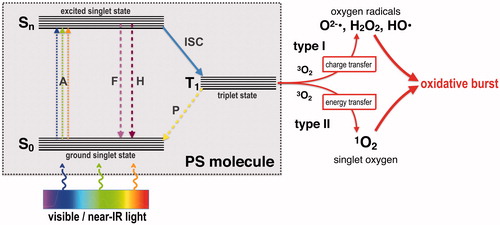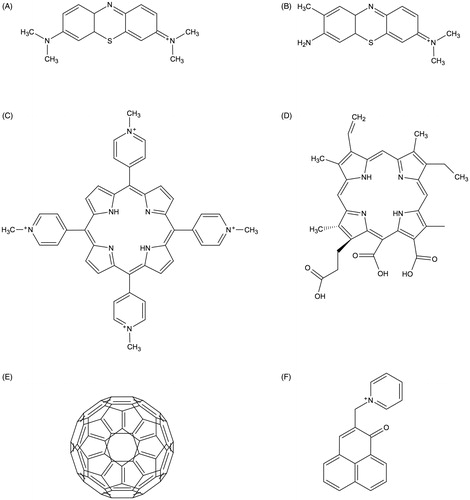Figures & data
Figure 1. Adapted Jablonski diagram showing the photochemical and photophysical mechanisms of antimicrobial photodynamic therapy (aPDT). S0: ground singlet state of the PS molecule; Sn: excited singlet state of the PS molecule; T1: triplet excited state of the PS molecule; A: absorption of light; F: fluorescence emission; H: heat generation (internal conversion); ISC: inter-system crossing; P: phosphorescence emission; 3O2: ground state oxygen; 1O2: singlet oxygen; O2−•: superoxide anion; HO•: hydroxyl radical; H2O2: hydrogen peroxide.

Figure 2. Selected main PS employed for aPDT. A: Methylene Blue; B: Toluidine Blue; C: TMPyP; D: chlorin-e6; E: fullerene C60; F: SAPYR.

Table
